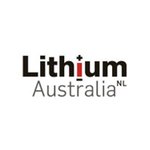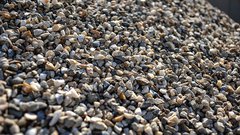Lithium Australia makes lithium production breakthrough
Hey! Looks like you have stumbled on the section of our website where we have archived articles from our old business model.
In 2019 the original founding team returned to run Next Investors, we changed our business model to only write about stocks we carefully research and are invested in for the long term.
The below articles were written under our previous business model. We have kept these articles online here for your reference.
Our new mission is to build a high performing ASX micro cap investment portfolio and share our research, analysis and investment strategy with our readers.
Click Here to View Latest Articles
Lithium Australia (ASX:LIT) has continued its technological advancements, this time successfully developing a hydrometallurgical process for the recovery of lithium from spodumene, the primary source for hard rock lithium production.
The process, known as the SileachTM process follows on from last year’s breakthrough where Lithium Australia produced its first lithium hydroxide.
LIT is a developer of disruptive lithium technologies and has strategic alliances with a number of companies that could provide access to a diversified lithium mineral inventory spanning three continents.
Managing Director Mr Adrian Griffin, says the Sileach process is “potentially to the lithium industry what froth flotation is to the base metals industry.
“In the early 1900s three out of every 4 tonnes of ore unearthed from Broken Hill went to waste dumps because the lead could not be separated from the zinc. The massive dumps would have entombed the mines heralding the end of production, had it not been for the advent of froth flotation.”
“Hard-rock lithium faces a similar dilemma with energy intensive processes dictating what can and can’t be economically processed. Only high-grade spodumene concentrates, are viable under such conditions. The low-grade materials, be they spodumene or mica, have, in the past, been destined for the waste dumps. The SileachTM process can change that by producing a cost-effective means of processing lower grade, or hitherto difficult to treat materials.”
The Sileach process is readily adaptable to other silicate minerals and has been developed to reduce the cost of producing lithium chemicals from materials that have traditionally been roasted, with very high energy costs, to recover the lithium.
Independent laboratory tests of the Sileach process has achieved lithium extractions, from alpha spodumene, of up to 92% in 4 hours.
How it works
The Sileach process has the potential to release the value from stranded lithium silicate deposits – those deposits quarantined by sub-economic grades. It can then transform low-grade spodumene occurrences into viable ore as, due to lower projected operating costs, it is less sensitive to feed grade.
The result of this is lower cut-off grades for resource calculations, expansion of existing resources without the requirement for further drilling, and greater recovery of metal inventories.
As the lithium is precipitated from solution in the Sileach process, all impurities in lithium silicate feed can be rejected during the production of lithium chemicals. Spodumene, and other silicates, in which impurity concentrations would otherwise render them unmarketable, can now be considered viable process feed.
“The SileachTM process will not only provide a commercial opportunity for newly mined materials, but will also unlock the value of lithium minerals discarded in the past,” Griffin said.
This new breakthrough will be used in Lithium Australia’s current projects.
In LIT’s Pilbara Project, where it has MoUs with Pilbara Minerals Limited (ASX:PLS) and Venus Metals Corporation (ASX:VMC) in Western Australia, Sileach will be used to process a range of lithium materials produced from this project. This includes micas, clays and low grade spodumene, which in the past may have been sub-atomic.
At the Electra Project in Sonora, Mexico, Sileach will be used together with other processes once materials become available. This project is a joint venture and farm-in with TSX listed Alix Resources (TSX-V:AIX).
In Lepidolite Hill, also in Western Australia, the Sileach process is currently being evaluated on material from the deposit in anticipation of much improved leach times. This project, undertaken in conjunction with Coolgardie Rare Metals Venture, and in which LIT holds 80% interest has already been the subject of intensive metallurgical testing by LIT.
LIT’s Cinovec deposit located in the Czech Republic could see the Sileach process improve economics by recovering a significant portion of the lithium carried in other silicates, and discharged to waste during de-sliming as outlined in the scoping study announced by European Metals Holdings Limited (ASX: EMH) in May 2015. The Cinovec deposit is subject of a non-binding MoU with LIT.
The scoping study estimated the overall lithium recovery to be 70%. LIT believes that the Sileach process can substantially improve this, potentially adding to the revenue stream.
“There is no shortage of lithium deposits or concentrating plants in the world but there is a massive shortage of lithium carbonate and hydroxide plants and Lithium Australia is focused on filling that gap with its leading edge environmentally friendly processing technologies,” Griffin said.
General Information Only
S3 Consortium Pty Ltd (S3, ‘we’, ‘us’, ‘our’) (CAR No. 433913) is a corporate authorised representative of LeMessurier Securities Pty Ltd (AFSL No. 296877). The information contained in this article is general information and is for informational purposes only. Any advice is general advice only. Any advice contained in this article does not constitute personal advice and S3 has not taken into consideration your personal objectives, financial situation or needs. Please seek your own independent professional advice before making any financial investment decision. Those persons acting upon information contained in this article do so entirely at their own risk.
Conflicts of Interest Notice
S3 and its associated entities may hold investments in companies featured in its articles, including through being paid in the securities of the companies we provide commentary on. We disclose the securities held in relation to a particular company that we provide commentary on. Refer to our Disclosure Policy for information on our self-imposed trading blackouts, hold conditions and de-risking (sell conditions) which seek to mitigate against any potential conflicts of interest.
Publication Notice and Disclaimer
The information contained in this article is current as at the publication date. At the time of publishing, the information contained in this article is based on sources which are available in the public domain that we consider to be reliable, and our own analysis of those sources. The views of the author may not reflect the views of the AFSL holder. Any decision by you to purchase securities in the companies featured in this article should be done so after you have sought your own independent professional advice regarding this information and made your own inquiries as to the validity of any information in this article.
Any forward-looking statements contained in this article are not guarantees or predictions of future performance, and involve known and unknown risks, uncertainties and other factors, many of which are beyond our control, and which may cause actual results or performance of companies featured to differ materially from those expressed in the statements contained in this article. S3 cannot and does not give any assurance that the results or performance expressed or implied by any forward-looking statements contained in this article will actually occur and readers are cautioned not to put undue reliance on forward-looking statements.
This article may include references to our past investing performance. Past performance is not a reliable indicator of our future investing performance.






